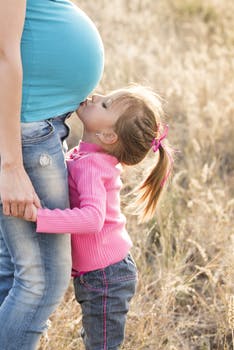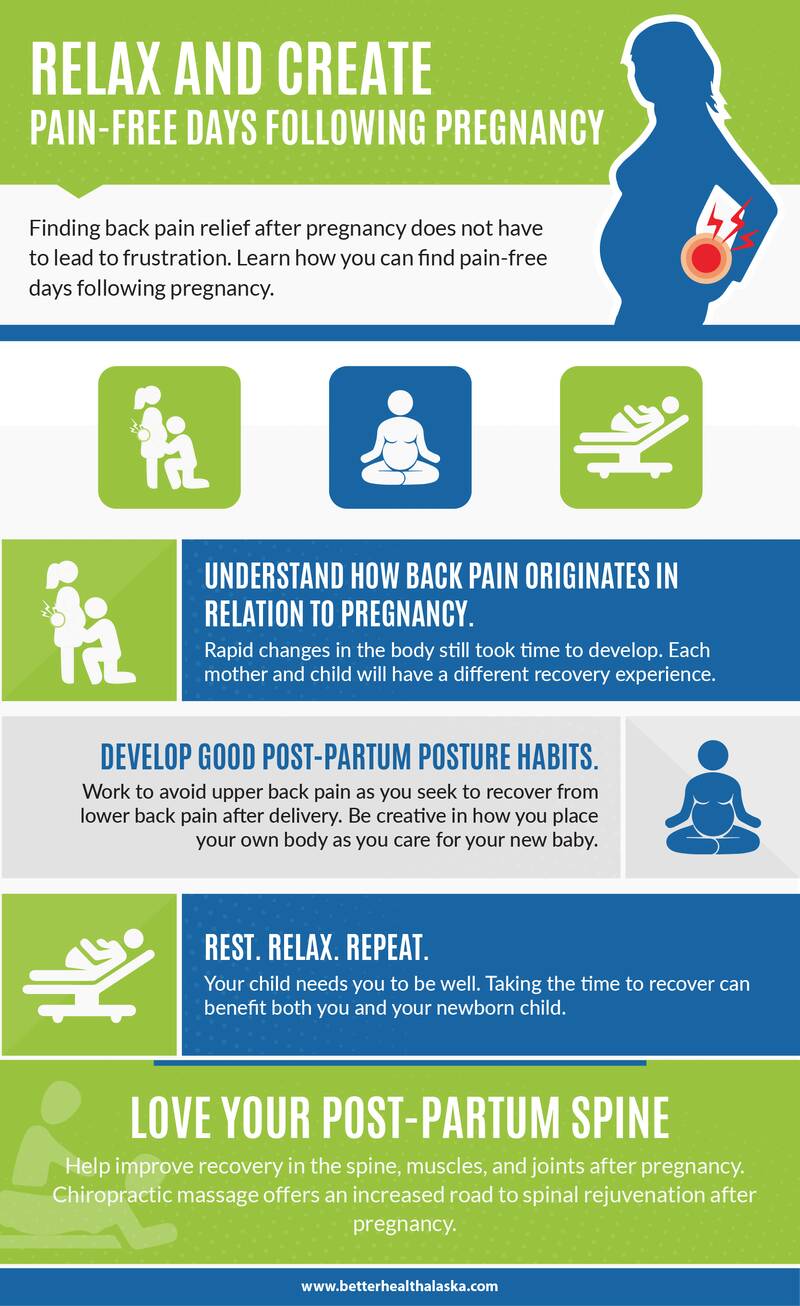Postpartum back pain is not often expected in advance. There it is though. You are already exhausted, hungry, and attempting to regain strength and healing – and now back pain has joined your post pregnancy days. Forget about sleep and normal patterns of health and wellness – at least for a bit. So, what can be done to help you navigate this new road of excitement laced with pain and discomfort?
Caring for your newborn means considering your own health, too. Spending time at home after delivery may lead you to seek a few home remedies for back pain after delivery. Mix this with proper joint and spinal care and create your own personal path to post pregnancy recovery.
Understanding The Start of Post-Partum Back Pain
That new little creature may seem tiny once it has exited the human body. Oh, so small, and frail those digits and limbs seem as they kick around sporadically in the air. However, the existence of this new creature will likely not have seemed tiny to the mother’s spine, joints, and muscles. Her musculoskeletal system will have taken on increasing pressure as the child grew and became strong inside her body.
Now, that her body is no longer holding the newly growing life within the womb, it must begin to regain its normal positioning and start to function as mother instead of ‘mother-to-be.’ This may sound simple enough. However, the joints, muscles, tendons, ligaments, and spinal functions may not always pop back just quite as quickly as may be desired.
It takes time for a mother’s body to adjust to the growing life inside. True, the unborn child grew fast, but in small increments over time. A mother’s body will have made small adjustments over time along with the newly growing life inside it.
This means that the mother’s body will have become accustomed to its new positioning somewhat gradually. It should be expected that it will take a bit of time for a mother’s body to regain its prior placement. Each of the many portions that make up the whole must be given care and time to recover. It must also be considered that physical changes during pregnancy will happen differently for each mother and baby.
Assuming that everything will snap back just as quick as a rubber band would be nice. Subject to the elements of nature and human function, this often just does not happen in the exact manner that we may plan to experience. As a fetus grows, the uterus must expand to accommodate the rapidly growing new life. This affects not only the womb area but the surrounding abdominal muscles.

Weakened abdominal muscles contribute to an overall change in posture as the pregnancy continues. While a woman’s entire body may drastically change during pregnancy, must of the change in weight occurs in the central portion of the mother’s body. This dramatically uneven distribution increases the risk for lower back pain. Rapid physical changes in the body bring increased work to the muscles in the woman’s body.
The process of birth, for most women, causes the mother to use muscles that may not otherwise be used every day. Recovery times will vary depending on the situation surrounding each pregnancy and birth experience. It may take weeks or months for the muscles and joints to begin to regain their prior level of strength and comfort.
How bad is your pain?
Take our QUIZZES below and find out!
What Can Be Done to Improve Back Pain After Pregnancy?
Sleep. What is that? Those first few weeks and months after the birth of a child can feel like a tornado mixed with thousands of special and unique rainbows. Rebuilding strength and preventing pain can help to decrease the winds of that tornado and increase the bright colors of each rainbow as it develops.
A woman’s entire body can be greatly affected by the growth and birth of a child. It has just brought forth a whole new human creature – and deserves a chance for recovery. Care of the spine, joints, and muscles can greatly improve recovery time and help reset the body’s natural positioning after delivery. Family members who often help with infant care may also need to consider these habits for the sake of their own health and wellness while caring for a newborn.
1) Develop Good Post-Partum Posture Habits
Practice good posture while breastfeeding and bottle feeding. If you are breastfeeding, it can be a natural thing to become so focused on proper feeding techniques that your own body suffers. A hunched and strained position may get the child fed, but it does not lend well to consistent feeding habits that young, tiny bellies need. Rather than scrunching your adult body down to the hungry infant, bring the baby up to a comfortable feeding position.
Find a way that allows you to keep your spine upright with your back and arms resting comfortably. These steps are important for bottle feeding as well. Poor posture can leave you with lower back pain as your body recovers from the child’s days of pre-birth growth and bring upper back pain after delivery! Add to this the time spent bending over bathing, changing, and playing with the amazing new creature and you have a recipe for both back and neck pain.
2) Do a Few Gentle Back Pain Exercises After Delivery
Rebuilding core muscles goes a long way in helping to reduce severe back pain after pregnancy. Starting small may seem difficult or ineffective. Yet, starting small and consistent is much more effective than increasing activity too fast and causing a serious injury post-partum. Be sure to speak with a physician to determine when your body is ready for back pain exercises after delivery, especially if you experienced a cesarean.

Consider these few exercises as you begin:
Belly Breathing. Rest flat on your back and focus on allowing your belly to fully rise and fall as you breathe. Start with five to ten breaths daily. This is a great place to start! Be sure not to rush yourself or your body.
Pelvic Tilts. Rest flat on your back. Draw your belly button to your spine as you tilt your pelvis and bring your lower back flat onto the floor. You should no longer have that slight space between your lower back and the floor. Hold for five to ten seconds. Repeat three to five times as you are able each day. Increase to ten reps as your body allows.
Elbow Planks. (Consider this exercise once belly breathing and pelvic tilts have become easier.) Rest on the floor on your stomach. Place your elbows directly below your shoulders. Place your legs straight and about shoulder-width apart. Draw your abdomen tight. Hold for five to ten seconds. Repeat one to five times daily. Increase your time to thirty seconds as your body allows.
Gentle back stretches may also include cat stretches, knee hugs, and upper back stretches. Take your time and carefully do each stretch or exercise that you choose. Speed and strength will come on their own if you stay consistent. Your primary job post-partum is caring for yourself and your new baby – not running your first ultramarathon two weeks later.

3) Relax. Rest. Repeat.
We already know that these will be part of what is needed before and after the birth of a child. Doing them can be tricky, but very worthwhile for both the infant and parent. So yes, relax, rest, and kick your feet up! At least as much as you can. If a warm soak in the tub sounds too time-consuming, soak your feet in warm water as you feed your new baby.
Be creative and plan some downtime into your newly developing schedule. Recharging your mind and body will pay great dividends as you work to care for yourself and your new family member. Your body needs time to recover. Proper sleep and rest can help further the body’s ability to recover on its own.
Real rest can be difficult when we are bombarded with dozens of new tasks and duties. Take the time to consider what will be the best way for you and your family to ensure that each person gets the rest that is needed. The early days are short and fast.
Resting and relaxing during this time may sound counter-productive. However, preventing and decreasing severe lower and upper back pain after delivery goes a long way toward increasing what your body will allow post-partum. Be strategic in your rest and relaxation – but be sure it happens.
Mothers of multiples especially need to consider how their body will need to recover. In addition to a higher number of feedings, more weight and pressure has been placed onto the body during pregnancy. Therefore, greater care will be required to ensure that long-term injuries are not sustained.

4) Love Your Post-Partum Spine: Get a Chiropractic Massage
You have definitely earned this one. A mother’s body takes on so much during pregnancy. Caring for the spine, joints, and muscles after delivery can be incredibly rewarding. Allowing yourself some time to recover physically can dramatically improve the way you spend those first few months with your new creature. Caring for a new baby can be quite physically demanding. New mothers often find it very helpful to ensure that their physical health is regained early in the life of the new child.
As you are trying to absorb all that is new and different, be sure to take advantage of all that is available to you. Chiropractic massage offers a rejuvenating sequence of adjustments that work to help the spine to regain its pre-pregnancy positioning, reducing the body’s need to send pain signals during the recovery process. Muscles, joints, and spinal connections will thank you for taking the time to help them find their post-baby functions after delivery.
Better Health Chiropractic & Physical Rehab offers pregnancy and post-partum chiropractic care. Families are welcome to inquire about the most effective treatments for both mother and child. Experiencing lower back pain six months after pregnancy is not fun. We are happy to help minimize pain a quickly as possible and help patients better enjoy those early days after the birth of their child. Contact us today to request an appointment for you or a family member.
Schedule an Appointment and Receive
FREE One-Hour Massage Certificate
That’s right! Receive a certificate for a free one-hour massage with our highly-trained and licensed massage therapists for use after your first appointment. Use it yourself, or give it to a friend.
[gravityform id=”8″ title=”false”]



 Lyshom Knee Disability Index
Lyshom Knee Disability Index Neck Disability Index
Neck Disability Index Back Disability Index
Back Disability Index Shoulder Disability Index
Shoulder Disability Index Headache Disability Index
Headache Disability Index





